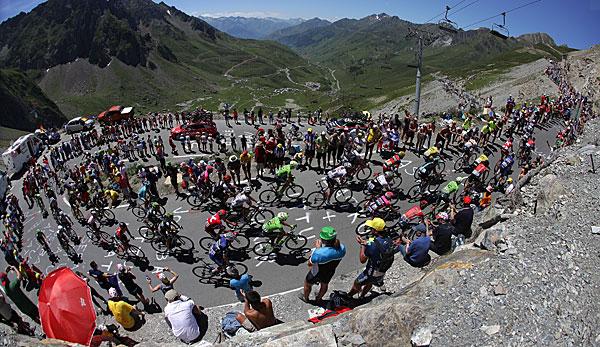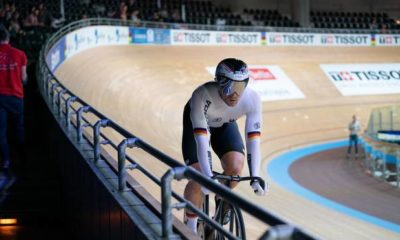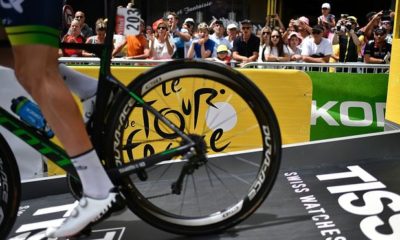From 7 to 29 July, France will once again host the world’s most prestigious cycling race, the Tour de France. Here we show you the different stages in profile and draw your attention to the highlights – including arrival in Alpe d’Huez and ascent to the Col du Tourmalet – of the Tour de France 2018.
Christophe Froome may try to defend his title in the 2018 Tour. The Englishman in the service of the Sky team has been acquitted by the UCI of any accusations of doping and together with 175 other professionals will take over the 21 stages.
Also at the 105th edition of the tour some highlights are integrated into the route. On the ninth stage, for example, the riders have to overcome the dreaded paved roads to Roubaix for 21 kilometres.
The mountain stages also feature some classics. In the Alps, the legendary mountain arrival in Alpe d’Huez is back in the programme. In the Pyrenees, the field must conquer the Col du Tourmalet and the Col du Aubisque, among others.
The final stage is another difficult individual time trial, which is more suitable for climbers. In addition, after three years a team time trial was again integrated into the tour schedule.
For once, the Grand Depart is not a prologue in 2018. Instead, the tour of France starts on the Atlantic island Noirmoutier-en-l’Ile with a long flat stage. Right at the beginning a sprinter should be in the yellow jersey. However, the teams must watch out for wind edges during the first section along the Atlantic to the south.
The second section offers the sprinters their next chance to win the day. The small mountain classification at the beginning should only serve to determine the first wearer of the dotted jersey.
After three years of abstinence, another team time trial is held. For the teams the possibility to position several riders in the classification with good prospects. Here a contender for the overall victory could slip into Maillot Jaune.
The undulating terrain in Brittany seems to be predestined for outlier groups. The sprinter teams will have to work properly over 195 kilometres to force a sprint finish.
Five – albeit small – mountain rankings are included in the fifth section. Again, runaways should have good cards. But even the favourites are warned and must be careful not to leave too many grains on the section.
The final phase of the sixth stage was to be spectacular. Within the last 16 kilometres, the Mur-de-Bretagne must be crossed twice. The tough climb should already be an indication of who can have a say in the fight for overall victory.
After the undulating sections in Brittany, the sprinters should have good maps for the longest stage of the 105th edition of the Tour de France. Almost completely flat the track leads the field to Chartres.
The eighth stage could be the last chance for the sprinters to win the day for the time being. On the way to Amiens you have to pay attention to the wind.
The terrain doesn’t really seem difficult. But the drivers can expect a very hard part. The reason for this are the dreaded paving stone passages on the way to Roubaix. The field of riders must cover a total of 15 pavement sectors over a total distance of 21.7 kilometres.
After the first rest day we go to the Alps. Three mountain classifications of the first and even one of the Hors category are on the agenda. The first section after the Montee du plateau des Glieres is particularly difficult if you follow a dirt road for two kilometres. Falls are probably pre-programmed here.
The eleventh section is a tough one and should lead to the first really big exchange of blows among the contenders for the Tour victory. Two mountains of the highest difficulty have to be conquered before a 17-kilometre final climb to La-Rosiere is imminent.
No less exciting should be section number twelve. The end of the alpine climbing can well and gladly pass as the king’s stage of this year’s Tour de France. First, the Col de la Madeleine and the Col de la Croix de Fer are two over 20 kilometres long climbs that will demand everything from the riders.
The end of the stage is concluded by the classic. After two years of abstinence, the myth Alpe d’Huez is back on the tour schedule. The 21 hairpin bends up to the ski resort are likely to be the atmospheric highlight of the 2018 tour.
After climbing in the high mountains, there is a classic, quiet transition stage. The drivers for the overall classification will lick their wounds. The sprinter teams should like that.
There should be no talk of rest on this section. The narrow roads in the direction of the Massif Central offer optimal opportunities for outliers. The final climb should also get down to the nitty-gritty. Overall class drivers who were disappointed in the Alps could try to make up for a few seconds here.
The 15th section is also predestined for contenders for the day’s victory. The train is moving towards the Mediterranean coast, whereby the rising temperatures will be a further burden not to be underestimated.
The two mountain classifications of the fourth category at the beginning of the 16th stage should not be a big hurdle after the second rest day. Then, however, three quite strenuous climbs in the Pyrenees come to the point. The short detour to Spain is the only excursion to non-French territory.
New format for the tour! The drivers will be divided into five blocks according to their stand in the overall standings and will be sent onto the track one after the other. The planned “Formula 1 start” should ensure that the captains have to start the first climb without helpers and there is an exchange of blows right at the start. That’s why the stage of 65 kilometres, consisting only of climbs and descents, is the shortest – apart from the two time trials, of course.
The sprinters will be in demand again on the 18th stage before the overall standings on the last two sections are once again on the agenda. In Pau, the fight for the green jersey could be decided prematurely.
Showdown in the Pyrenees! On the last mountain stage, the organisers once again made the stage profile extremely difficult. The two 4th category mountains were only the overture for the grand finale. Besides the notorious Col du Tourmalet, we also have to climb the Col d’Aubisque.
The last forces have to mobilise the riders on the penultimate stage in the time trial. The route leads through the Pyrenees, which is why it is not the classic time trial riders, but rather the mountain specialists who are favoured. In the fight against the clock, the decision will be made to win the tour.
On the last stage, the wearer of the Maillot Jaune is traditionally no longer attacked. Rather, the prestigious arrival on the Champs-Elysse in Paris is in the foreground. Let’s set the stage again for the sprinters.
As in the last years, ARD shows all stages of the Tour de France in full length on free TV. You can get all information about the transmission here.
As usual, SPOX offers a live ticker for each stage, so you don’t miss a thing either. All events will be available here.



















You must be logged in to post a comment Login